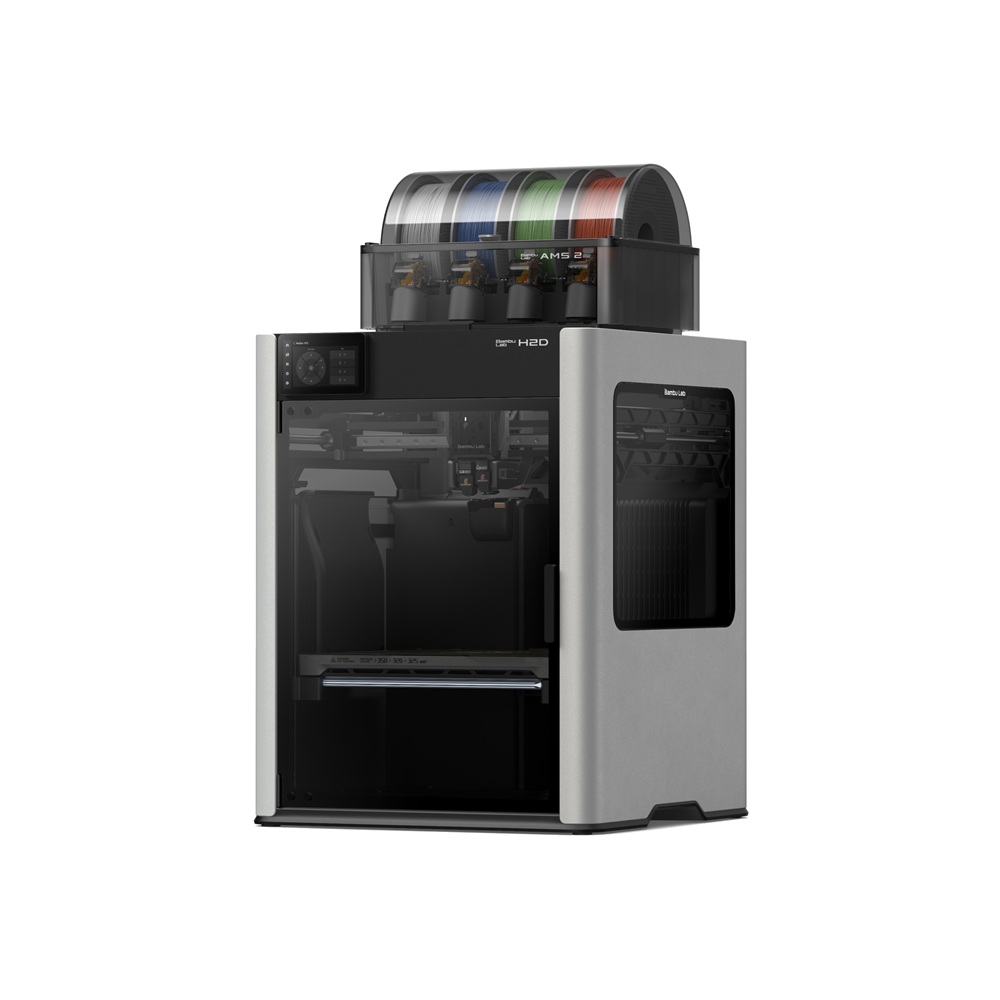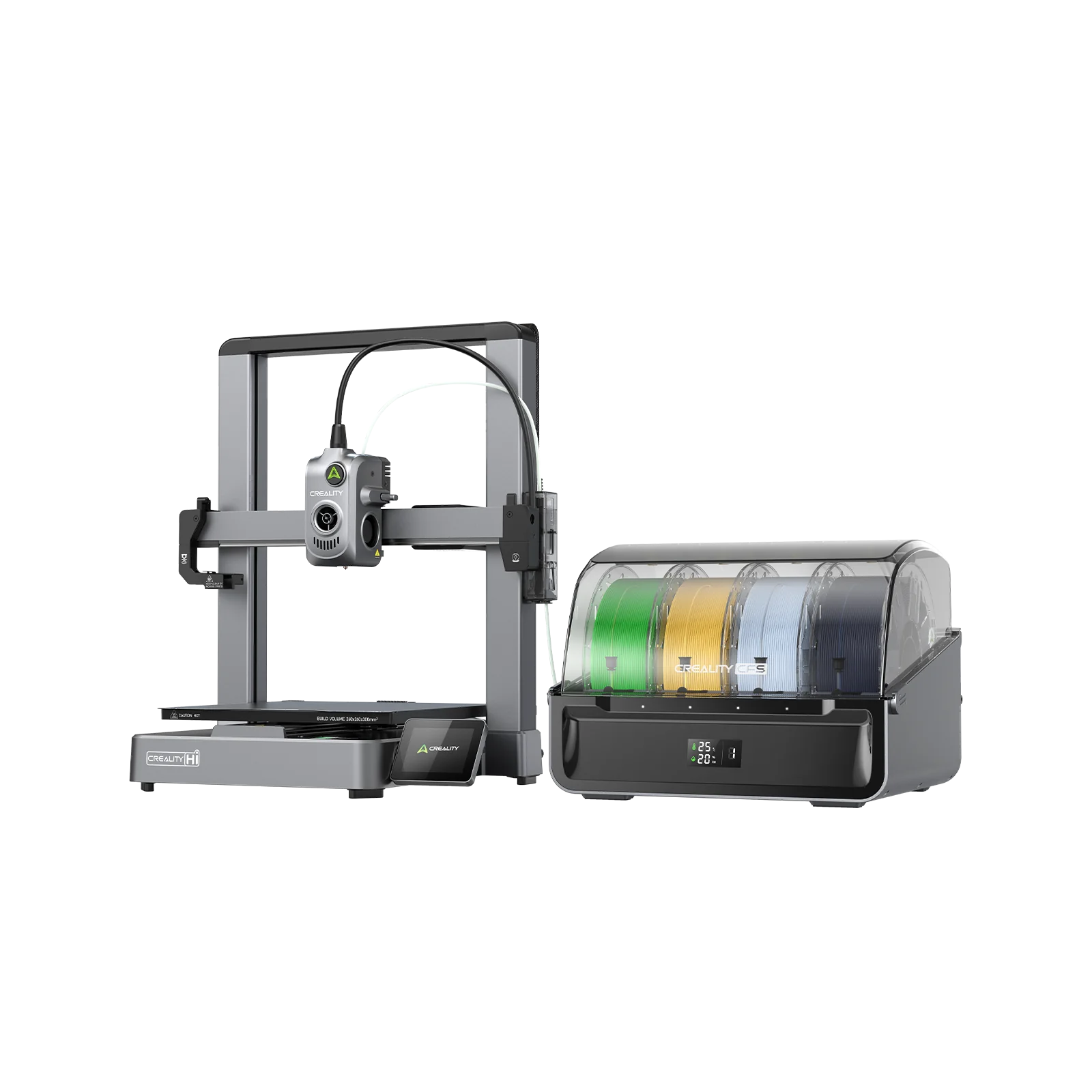Compare H2D vs Hi Combo
Comparison between the best 3D printers
Choose the best 3D printer at the best price. The cheapest 3D printers are here.
Buy a 3D printer here with 3D Fila.
 |
 |
|
| Model | H2D |
Hi Combo |
| Printing Material | Filament | Filament |
| Buy Filament for Bambu Lab H2D | Buy Filament forCreality Hi Combo | |
| Estimated price | $1899,00 | $469,00 |
| Manufacturer | Bambu Lab | Creality |
| Release Year | 2025 | 2025 |
| Print Volume [mm] | 350x320x325 | 260x260x300 |
| Printer Size [mm] | 492x514x626 | 409x392x477 |
| Weight [kg] | 42,3 | 19,14 |
| Power Loss Recovery | YES | YES |
| Enclosed printer | YES | NO |
| Bed Leveling | Automatic | Automatic |
| Filament End Sensor | YES | YES |
| Bed type | Heated | Heated |
| Power supply system | Direct Drive | Direct Drive |
| Standard nozzle | 0,4 | 0,4 |
| Maximum Nozzle Temperature [°C] | 350 | 300 |
| Maximum Bed Temperature [°C] | 120 | 100 |
| Maximum printing speed [mm/s] | 600 | 500 |
| Filament holder | YES | YES |
| Camera for supervision | YES | YES |
| Recommended filaments | PLA, PETG, ABS, ASA, TPU, PVA, Nylon (PA) | Hyper-PLA/PLA/PETG/ABS/PLA-CF |
| Recommended slicers | Bambu Studio | Creality Print 5.1 |
| Maximum Resolution [mm] | 0,01 | 0,1 |
| Processor | ||
| Display | Touchscreen 5'' | Touchscreen 3,2'' |
| Power Supply | 390 W | |
| Connectivity | Wifi, Bambu bus, Cartão SD | SD Wifi Creality Cloud |
| Operating systems | Windows, Mac, Linux | Windows, Linux e Macbook |
| Date of registration in the system | 2025-03-31 | 2025-01-27 |
| Release date | 2025 | 2025 |
| Extra features | Bambu Labs H2D combines high-speed 3D printing with a chamber heated up to 65 °C, dual extrusion with automatic nozzle switching, an AMS for filament drying and exchange, and AI sensors that detect failures. It offers optional laser and digital cutting capabilities, features intelligent calibration through computer vision, vibration control, enhanced fire safety, and real-time camera monitoring. | The Creality Hi Combo is an advanced 3D printer featuring the CFS system for up to 16 colors and intelligent filament management. It boasts a robust metal frame, speeds up to 500 mm/s, precise auto-leveling, an integrated extruder design, easy-to-swap tri-metal nozzle, and active vibration sensing for smooth prints. Its 95% pre-assembled, with a foldable touchscreen, built-in camera with privacy protection, and Creality OS support for a seamless and powerful experience. |
| Support for multiple colors and materials (AMS and CFS) | YES | YES |
Notes * |
||
| Cost-benefit | 7 / 10 | 8 / 10 |
| Hardware | 8 / 10 | 6 / 10 |
| Tela | . | . |
| Print volume | 4 / 10 | 4 / 10 |
| Performance | 5 / 10 | 4 / 10 |
Conclusion |
| In comparing the Bambu Lab H2D and the Creality Hi Combo, it's clear that both printers have their unique strengths and cater to different user needs. The H2D offers a premium experience with advanced features such as high-speed printing, dual extrusion capabilities, and intelligent monitoring systems, making it suitable for users who require high performance and versatility in materials. It also boasts a larger print volume and more robust construction due to its enclosed design, which enhances heat retention and consistency during printing. On the other hand, the Hi Combo presents itself as a more budget-friendly option with solid features that appeal to hobbyists and those looking for a reliable printer without breaking the bank. It has a decent print volume, good build quality, and essential functionalities such as automatic bed leveling and intelligent filament management. Its price-to-performance ratio is particularly appealing for first-time users or those with moderate printing needs. Ultimately, choosing between the two comes down to budget and intended use. For serious enthusiasts or professionals who can benefit from the advanced features and print quality of the H2D, the investment may be justified. Conversely, for casual users or those seeking a capable yet economical choice, the Hi Combo represents a commendable option that balances performance and affordability effectively. |

